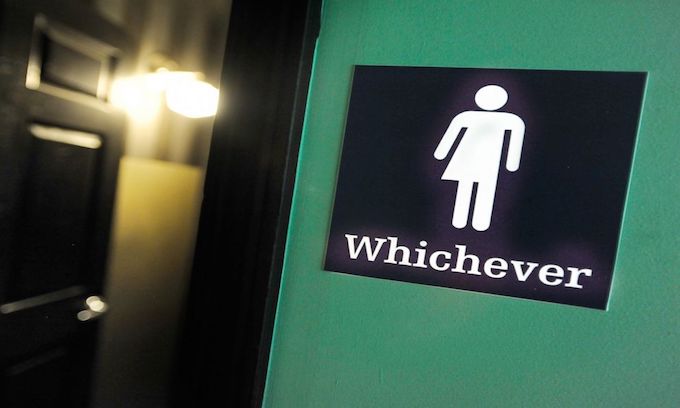Forwarding the LGBT agenda in public schools in the name of “tolerance,” the Minnesota Department of Education (DOE) recently approved a “toolkit” that directs schools to “segregate” students who are uncomfortable with sharing restrooms and locker rooms with transgender classmates.
The new pro-LGBT policy advises public school administrators and faculty on how students should interact with and protect transgender and “gender-nonconforming” students on campus.
Pushing confusion
Education Commissioner Brenda Cassellius indicated that the toolkit is nonbinding and is subject to future editing.
“[The goal of the toolkit is] to help school districts and charter schools create school environments where transgender and gender nonconforming students are safe, supported and fully included, and have equal access to the educational opportunities provided to all students as required by federal or state law,” Cassellius stated, according to the Minnesota Star Tribune.
Instead of segregating students who are gender-confused and refuse to accept their natural sex, Minnesota public schools are isolating students who feel uneasy about the unnatural arrangement of using restrooms and locker rooms with students of the opposite sex who are pretending to be something other than their gender at birth.
“Among the many ways the toolkit says schools can create a welcoming environment for transgender students, from kindergarten through 12th grade, is to provide transgender students with access to bathrooms and locker rooms that conform with students’ gender identity and to segregate students concerned with privacy,” TheBlaze reported.
The safety of heterosexual students is ignored, while the safety of the gender-confused students has become a top priority.
“Schools should work with transgender and gender nonconforming students to ensure that they are able to access needed facilities in a manner that is safe, consistent with their gender identity and does not stigmatize them,” the toolkit titled “Safe and Supportive Schools for Transgender and Gender Nonconforming Students,” reads. “Privacy objections raised by a student in interacting with a transgender or gender nonconforming student may be addressed by segregating the student raising the objection – provided that the action of the school officials does not result in stigmatizing the transgender and gender nonconforming student.”
Gay today, straight tomorrow?
No documentation of a student’s gender is required to visit opposite sex restrooms or locker rooms – meaning that a student can feel as if he is a girl one day and use the girls’ restroom and locker room, and feel like he is a boy the next day and return to the boys’ facilities.
“There’s nothing in the toolkit to prevent, for instance, a male student from claiming to be a girl and therefore having access to female restrooms and locker rooms, and then for a female student who objects to be ‘segregated,’” TheBlaze’s Justin Haskins pointed out.
Force-feeding the community transgenderism?
The toolkit directs schools to engage “shareholders,”—including faculty, administrators and other school staff, along with students, parents, student groups, family groups, racial and cultural groups and representatives from churches, businesses and community organizations – through regular meetings to “make transgender students more comfortable.”
Part of this process is observing strict guidelines regarding new transgender names and preferred gender pronouns – and how they apply to student records.
“Schools should not assume a student’s name, gender identity or pronoun,” the toolkit states. “School officials should ask the student and use the requested name and pronouns. Students need not provide schools with legal documents to correct their first name or gender within their student records. When students are referred to by the wrong pronoun by peers or school staff, students may feel intimidated, threatened, harassed or bullied. School staff can ensure a more respectful environment for all students when efforts are made to correct the misuse of pronouns, as well as names, in student records.”
Teachers are expected to make special preparations to accommodate gender-confused students – and no medical “transition” evidence is needed before students can be – must be – treated as a chosen gender.
“Teachers can support inclusion of all students – including transgender and gender-nonconforming students – by embracing simple classroom practices that allow for all students to participate in accordance with their gender identity,” the toolkit continues. “Classroom practices that recognize and affirm all students – including transgender and gender-nonconforming students – are varied and can include how the teacher addresses the classroom and how the teacher separates students into groups.”
Going a bit further than a suggestion, the toolkit uses a federal law to compel a close following of its guidelines.
“Family Educational Rights and Privacy Act (FERPA) protects the privacy of students,” the pro-LGBT document states. “Schools should note that neither a student’s gender nor pronouns are considered public or directory information. Casual use of a student’s incorrect pronoun or incorrect name may violate FERPA. FERPA also permits families to elect not to disclose directory information about their student.”
Transgenders are now turning proper dress codes, as well as age-old practices and traditions, upside down.
“In an effort for inclusivity, schools may wish to consider revisiting existing traditions or establishing new traditions,” the toolkit informs. “For example, instead of electing a homecoming king and homecoming queen, some schools have chosen to nominate ‘prom ambassadors,’ ‘homecoming court’ or ‘homecoming royalty.’ At the University of Minnesota, for example, the titles of homecoming king and queen have been replaced with the title ‘Homecoming Royalty’ and students selected as royalty will now be called ‘royals.’”
Wait a minute!
Minnesota Family Council CEO John Helmberger stressed that the toolkit completely overlooks the problems that straight students and their families have with the pro-LGBT/anti-family policies, noting that the guidelines will likely be challenged in the courtroom.
“Concerns of gender-conforming students and parents are ignored and dismissed” Helmberger asserted, according to the Tribune.
One parent whose four children are enrolled in the Anoka-Hennepin School District voiced her opposition to the radical new policy.
“Sadly, this toolkit undermines my authority as a parent,” insisted Joy Orbis, whose children prepared signs that donned the hashtag #Stopthetoolkit.
Another pro-family advocate and longtime opponent to the district’s amendments to LGBTQ policies, voiced her charge against the toolkit, and her comment was met by the screams of LGBTQ activists chanting “disrespect.”
“The toolkit encourages teachers to teach false conceptions of gender,” Anderson proclaimed in the meeting room, where the policy was introduced and discussed.
Opponents and proponents alike have voiced their opinions about transgenders using opposite sex restrooms and locker rooms.
“Stakeholders in Anoka-Hennepin hotly debated the use of bathrooms by transgender young people earlier this year,” the Star Tribune’s Beatrice Dupuy reported. “Dave Edwards from Transforming Families MN and parent of a transgender child, said 1,050 parents signed a petition supporting the toolkit.”
Politicians push back
Despite the support of Minnesota’s LGBT community, conservative politicians, including Rep. Tim Miller (R-Prinsburg) and Rep. Abigail Whelan (R-Ramsey) voiced why the toolkit should not be adopted.
Speaking from experience while out on the field, Miller proclaimed with confidence that not a single person in his district – including Renville and Chippewa counties – supports the use of the controversial pro-LGBT toolkit.
“I do not see sensitivities to a 13-year-old Christian girl or a kindergarten boy who cannot possibly have a sexual orientation,” Miller stressed, according to the Tribune.
When it was Whelan’s turn to speak, she compared the use of transgender pronouns to permitting people to determine what race they are.
“If someone says they want me to refer to them by a different race, I wouldn’t do that,” Whelan insisted.
Flying in the face of the opposition and ignoring the concerns of parents worried about their children being exposed to children of the opposite sex in bathrooms and locker rooms, Outfront Minnesota School Equity Director Esme Rodriguez declared the council’s vote in support of the toolkit as a victory for LGBTQ youth, claiming that its directives would save lives of transgender students.
“We are really, really thankful that the Minnesota Department of Education decided to pass this,” Rodriguez expressed.
Whelan lamented that the toolkit will make gender-confused students and heterosexual students alike even more confused about sexuality than they already are – thanks to the seemingly incessant implementation of more and more pro-LGBT policies.
“Hopefully, this does not create more confusions for all our students,” Whelan impressed.
—-
Copyright American Family News. Reprinted with permission.




















Recent Comments